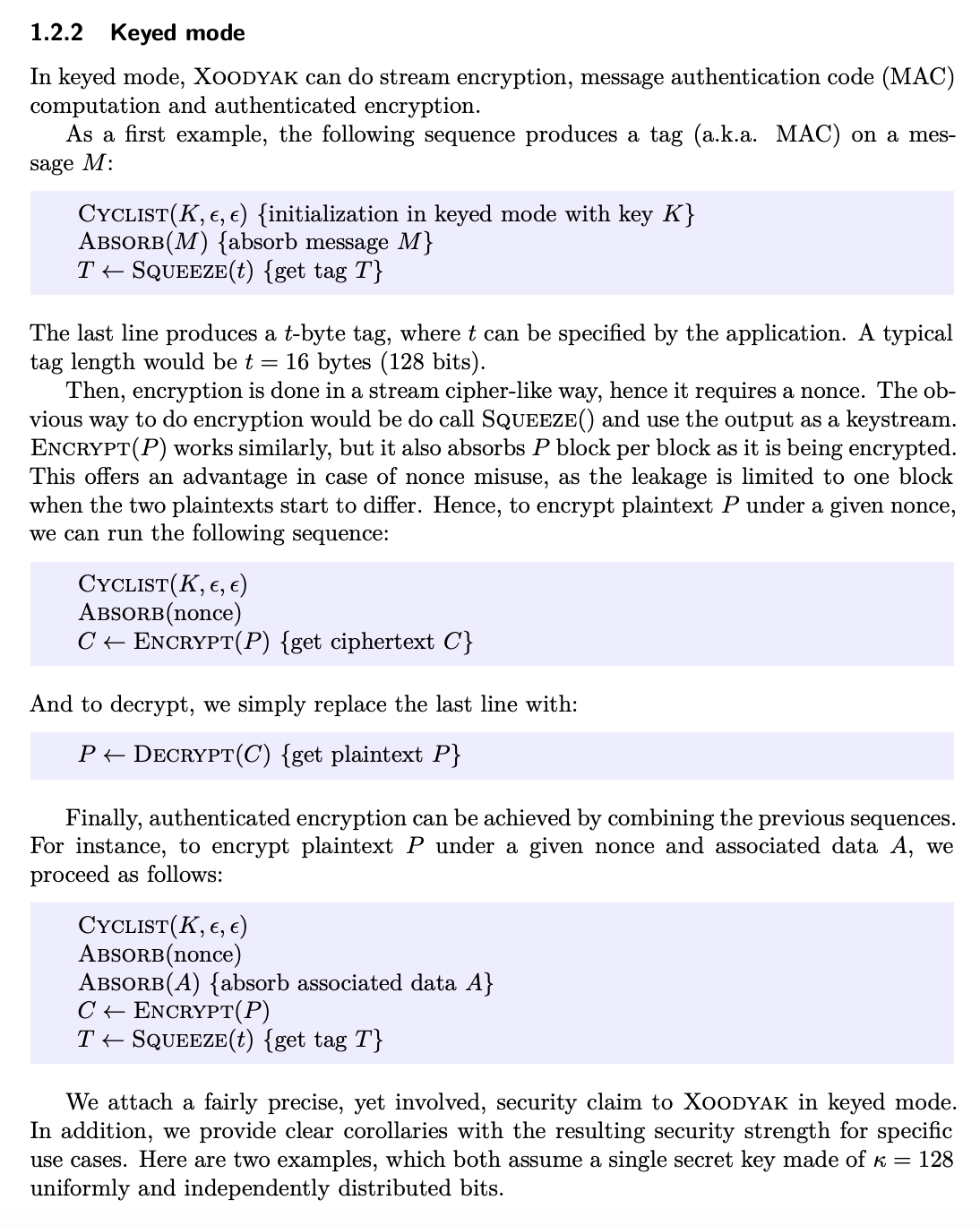If you need a public key encryption system compatible with snarkyJS, I would suggest a hybrid cryptosystem using the Pallas curve (the Group type in snarkyJS) for the public key part, and Poseidon for the symmetric part.
To give a bit more detail:
- a private key would be a scalar field element
x - the corresponding public key would be the group element
Group.generator.scale(x).
Let's say a message is an array of field elements msg: Array<Field> against a public key h: Group. In pseudcode:
type CipherText = {
c1: Group,
c2: Group,
m: Array<Field>
}
function encrypt(msg: Array<Field>, h: Group) -> CipherText {
const r = Group.random();
const y = Scalar.random();
const c1 = Group.generator.scale(y);
// c2 is a "blinded" version of r. r can be recovered from [c1, c2]
// if you have the private key corresponding to h
const c2 = r.add(h.scale(y));
// Now, r is a secret known only to the posessor of h's private key,
// so, we can use it to initialize a Poseidon sponge expand r out into
// a stream of field elements known only to the posessor of h's private key.
//
// We then use that stream of field elements to mask the message by adding
// them together.
let sponge = new Poseidon.Sponge();
sponge.absorb(r.x);
sponge.absorb(r.y);
let m = [];
for (let i = 0; i < msg.length; ++i) {
let x = sponge.squeeze();
m.push(msg[i].add(x));
}
return { c1, c2, m };
}
function decrypt({ c1, c2, m } : CipherText, s: Scalar) -> Array<Field> {
// recover r from c1, c2
let r = c2.sub(c1.scale(s));
// We can now compute the same stream of field elements used in encryption
let sponge = new Poseidon.Sponge();
sponge.absorb(r.x);
sponge.absorb(r.y);
// Unmask m to get msg
let msg = []
for (let i = 0; i < msg.length; ++i) {
let x = sponge.squeeze();
msg.push(m[i].sub(x));
}
return msg;
}We would have to add APIs for Group.random(), Scalar.random(), and Poseidon.Sponge.


this looks like elgamal encryption of a symmetric key to me. I think deriving the symmetric key from the key exchange is simpler:
without the auth tag, if you know part of the message you can forge a new message as:
This is basically what similar constructions do. For example, Strobe, or Xoodyak:
